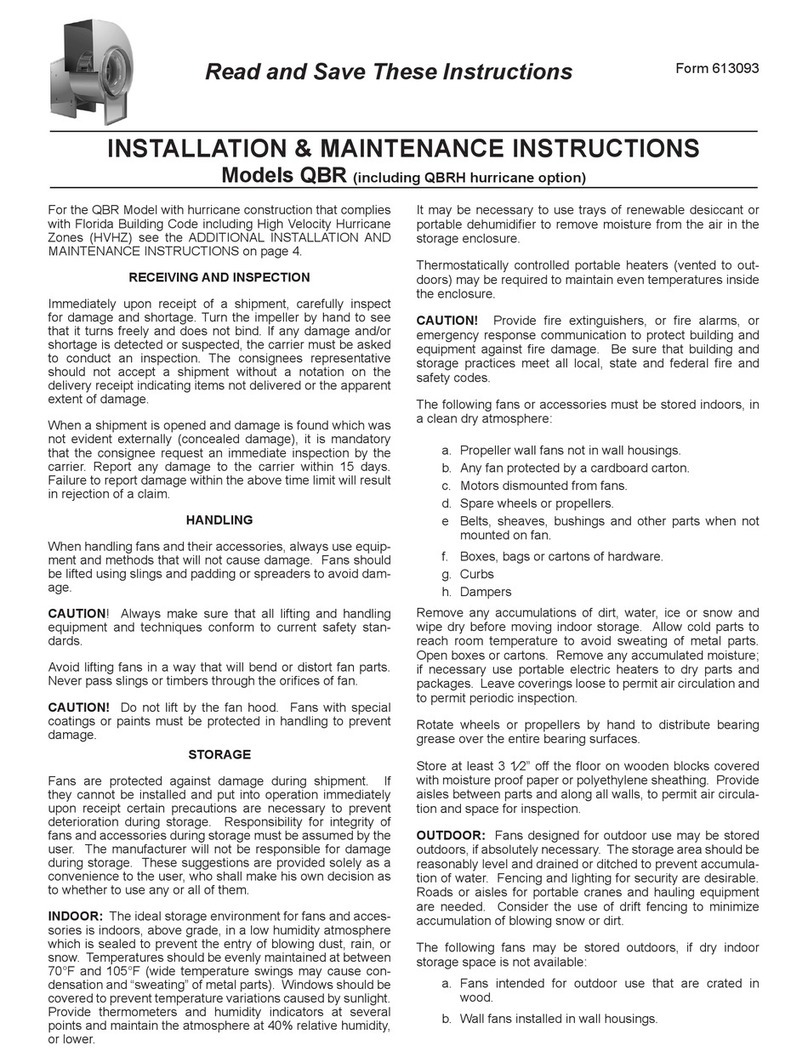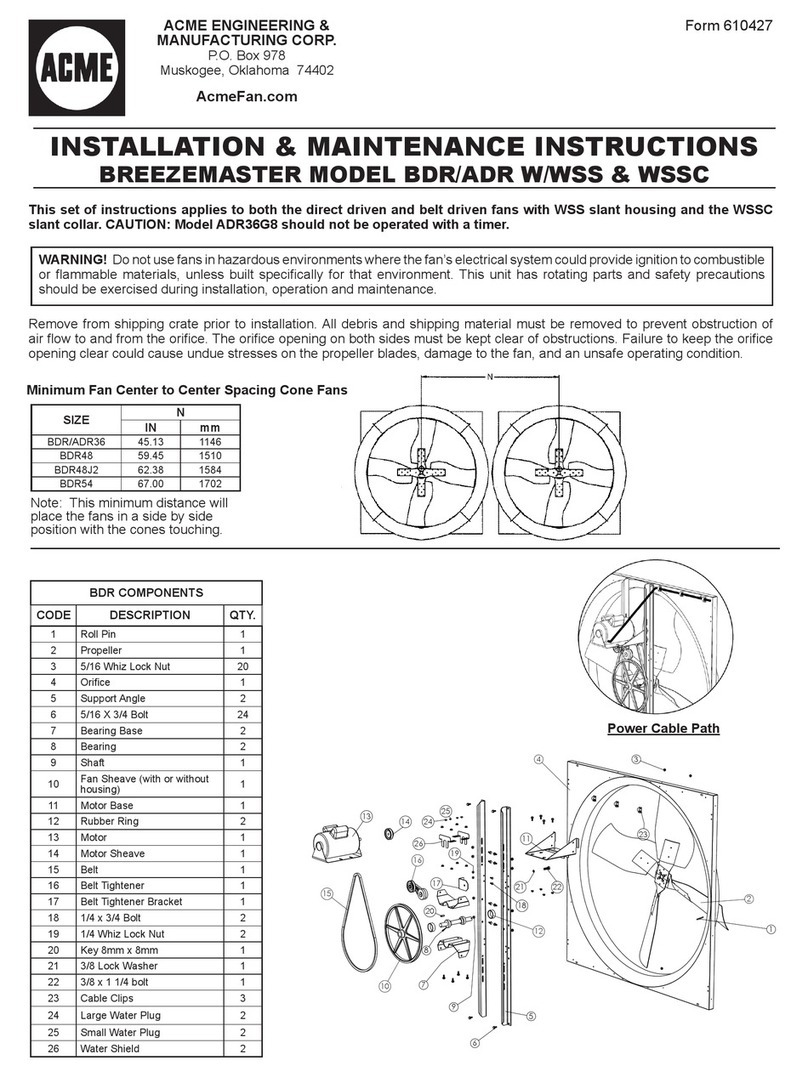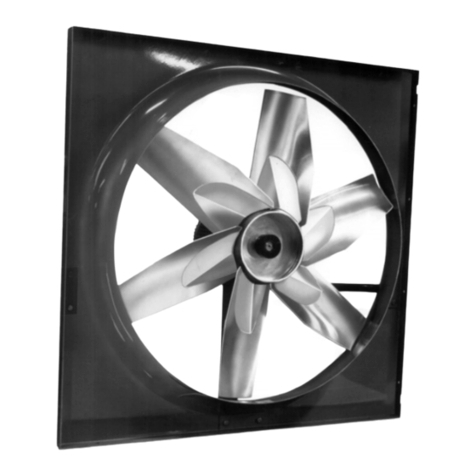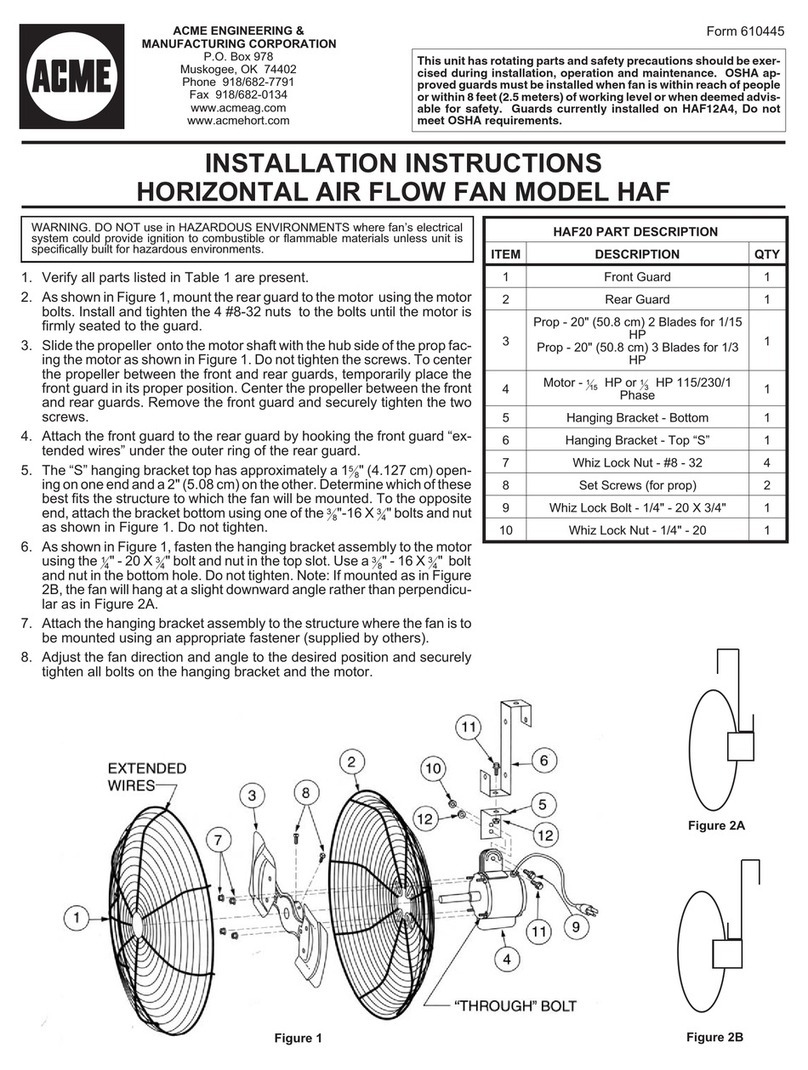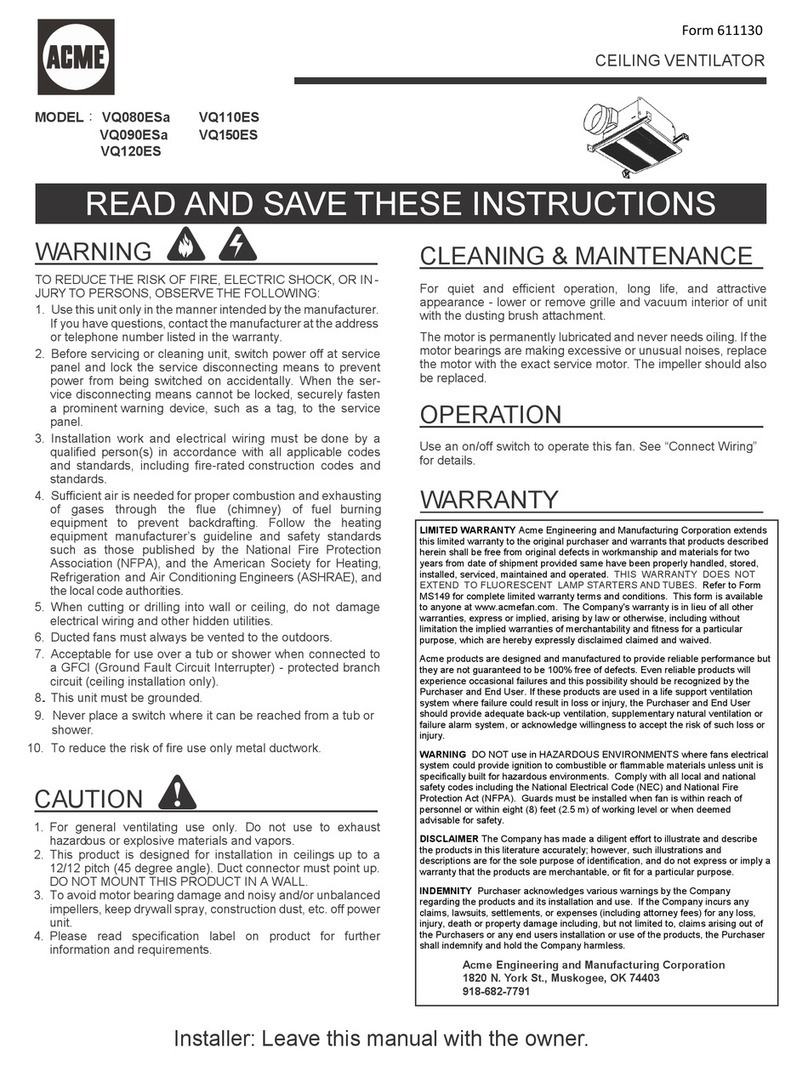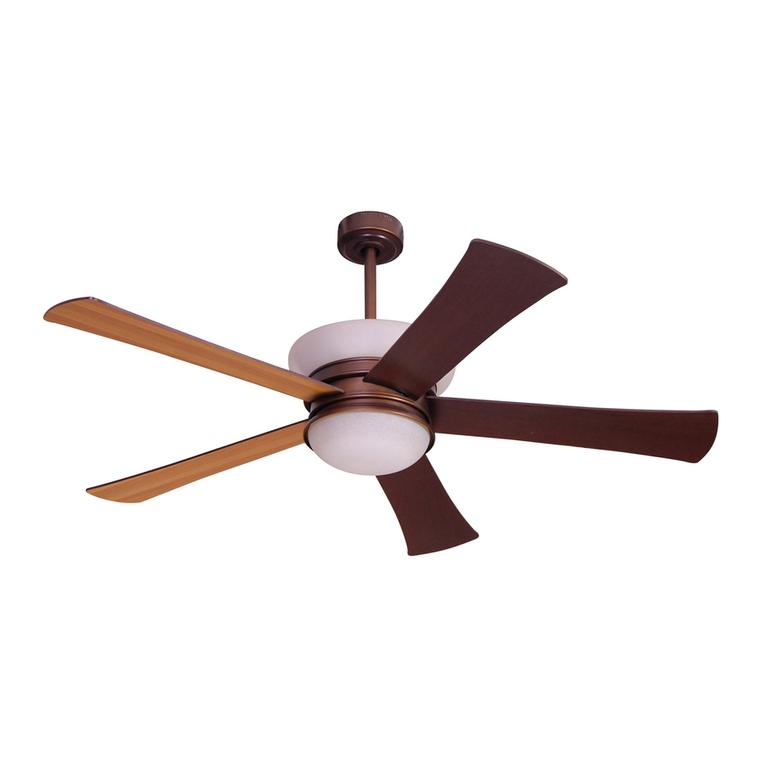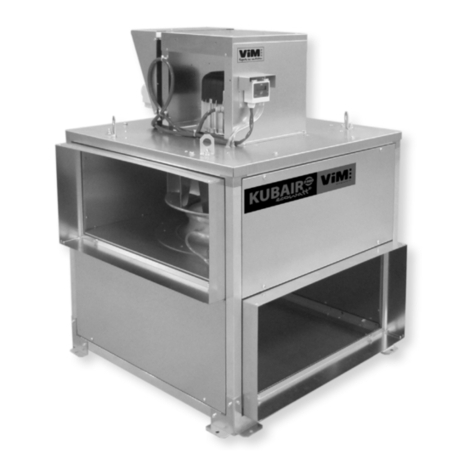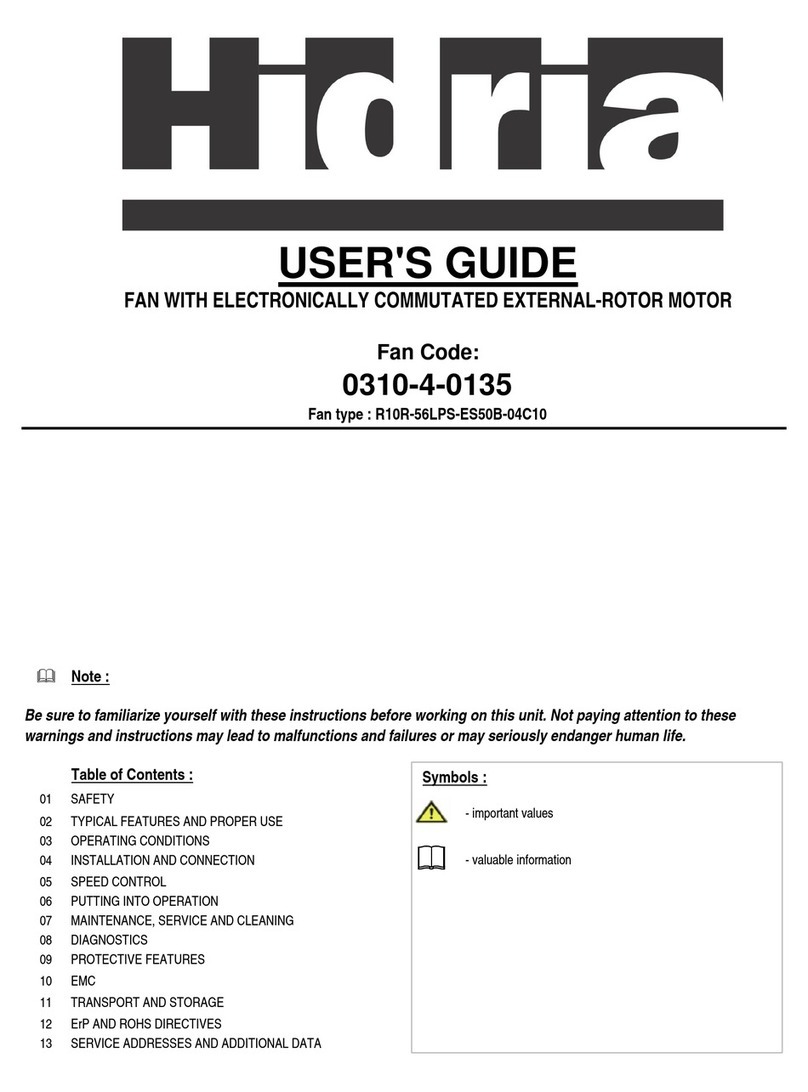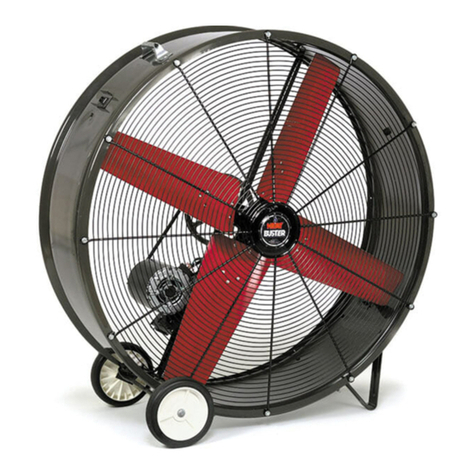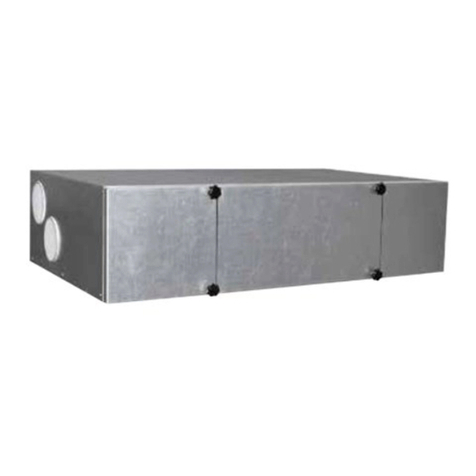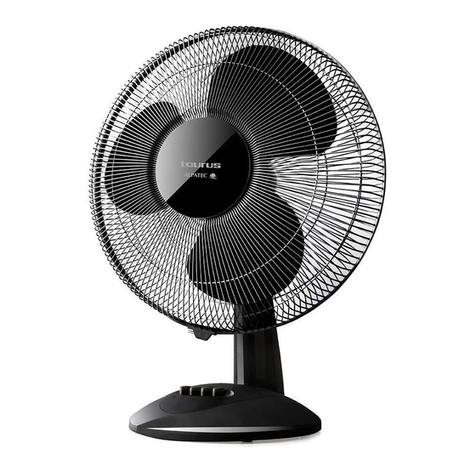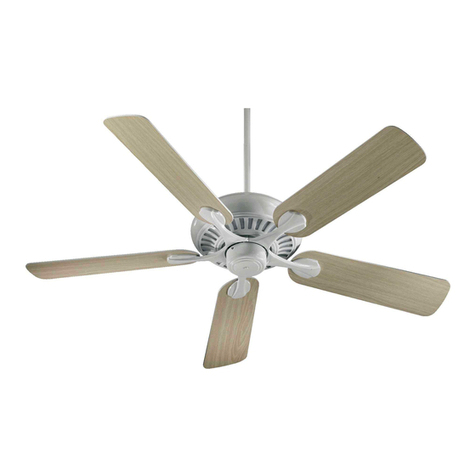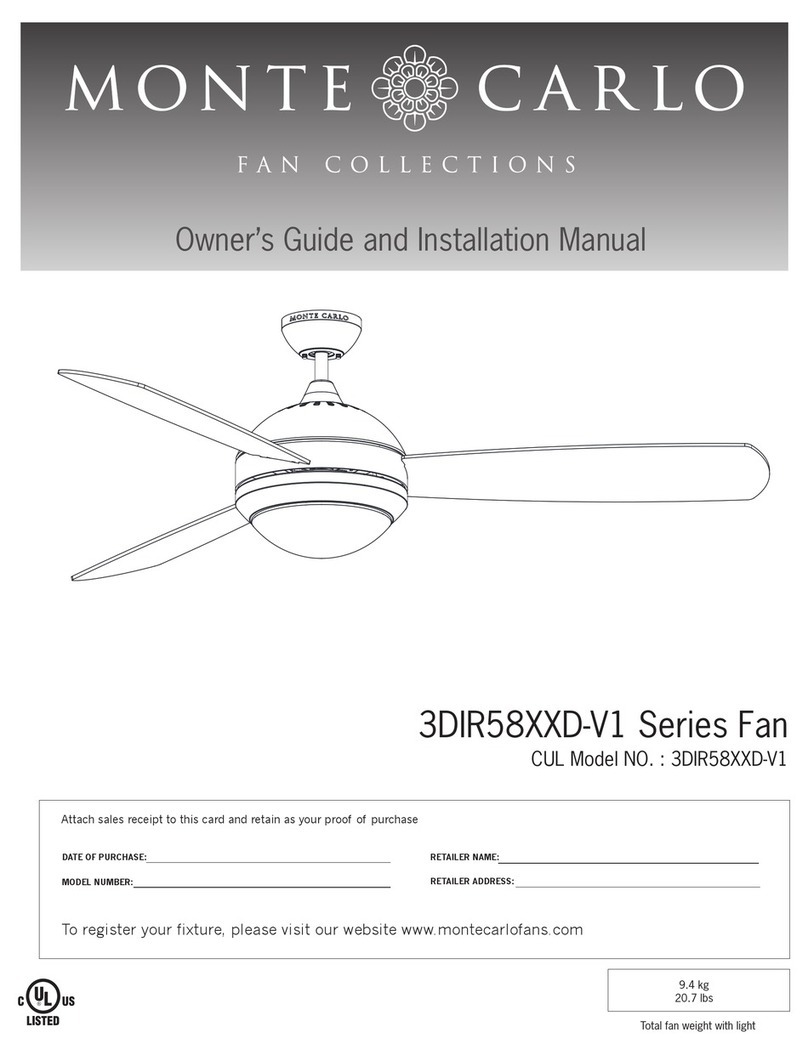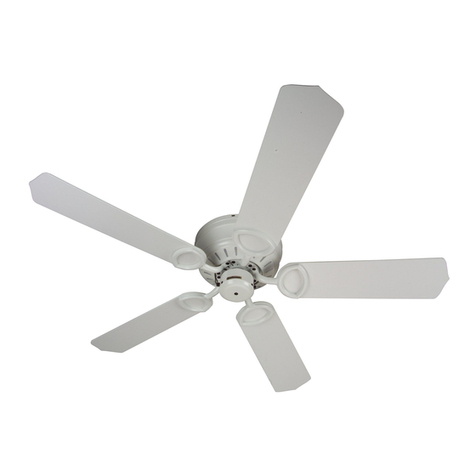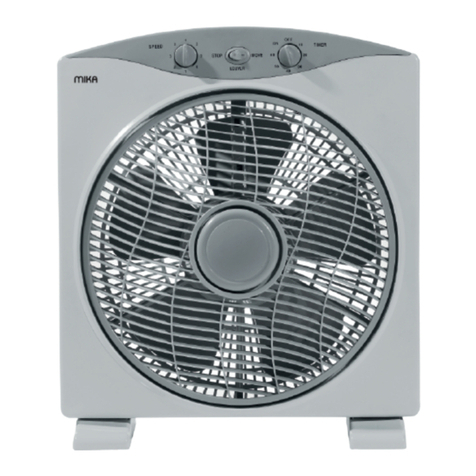
b. Any fan is protected by a cardboard carton.
c. Motors dismounted from fans.
d. Spare wheels or propellers.
e. Belts, sheaves, bushings and other parts when not
mounted on fan.
f. Boxes, bags or cartons of hardware.
g. Curbs
h. Dampers
Remove any accumulations of dirt, water, ice or snow and
wipe dry before moving indoor storage. Allow cold parts to
reach room temperature to avoid “sweating” of metal parts.
Open boxes or cartons. Remove any accumulated moisture;
if necessary use portable electric heaters to dry parts and
packages. Leave coverings loose to permit air circulation and
to permit periodic inspection.
Rotate wheels or propellers by hand to distribute bearing
grease over the entire bearing surfaces.
Store at least 3 ½” o the oor on wooden blocks covered
with moisture proof paper or polyethylene sheathing. Provide
aisles between parts and along all walls, to permit air
circulation and space for inspection.
OUTDOOR: Fans designed for outdoor use may be stored
outdoors, if absolutely necessary. The storage area should
be reasonably level and drained or ditched to prevent
accumulation of water. Fencing and lighting for security are
desirable. Roads or aisles for portable cranes and hauling
equipment are needed. Consider the use of drift fencing to
minimize accumulation of blowing snow or dirt.
The following fans may be stored outdoors, if dry indoor
storage space is not available:
a. Fans intended for outdoor use that are crated in
wood.
b. Wall fans installed in wall housings.
All fans must be supported on wooden blocks or timbers
above water or normal snow levels. Provide enough blocking
to prevent settling into soft ground. Fans should be set in
place using the directional arrow markings on the crate as a
guide.
Locate pieces far enough apart to permit air circulation,
sunlight, and space for periodic inspection. Place all parts
on their supports so that rain water will run o, or to minimize
water accumulation. Do not cover parts with plastic lm or
tarps - these cause condensation of moisture from the air
passing through heating and cooling cycles.
Fan wheels and propellers should be blocked to prevent
spinning caused by strong winds.
INSPECTION AND MAINTENANCE DURING
STORAGE
Inspect fans and accessories at least once per month,
while in storage. Log results of inspection and maintenance
performed. A typical log entry should include the following:
a. Date
b. Inspector’s Name
c. Name of Fan
d. Location
e. Condition of Paint or Coating
f. Is moisture present?
g. Is dirt accumulated?
h. Corrective steps taken?
If moisture or dirt accumulations are found on parts, the
source should be located and eliminated. Fans should be
rotated at each inspection by hand ten to fteen revolutions to
redistribute the motor and bearing lubricant.
If paint deterioration begins, consideration should be given
to touch-up or repainting. Fans with special coatings may
require special techniques for touch-up or repair.
Machined parts coated with rust preventive should be restored
to good condition promptly if signs of rust occur. The most
critical items are pulleys, shafts and bearing locking collars.
At the rst sign of rusting on any of the above parts, remove
the original rust preventive coating with petroleum solvent and
clean lint-free cloths. Polish any remaining rust from surfaces
with crocus cloth or ne emery paper and oil. Do not destroy
the continuity of the surfaces. Wipe clean with lint-free cloths
and recoat surfaces evenly and thoroughly with a corrosion
preventative.
REMOVING FROM STORAGE
As fans are removed from storage to be installed in their nal
location, they should be protected and maintained in similar
fashion, until the fan equipment goes into operation.
BEFORE INSTALLING CHECK FASTENERS
INSTALLATION
1. CAUTION! This unit has rotating parts and safety
precautions should be exercised during installation,
operation and maintenance.
2. WARNING! Do not use in hazardous environments
where the fan’s electrical system could provide ignition
to combustible or ammable materials, unless the unit is
specically built for hazardous environments.
3. WARNING! If gases, other than clean air, are to be
exhausted using the fan, then the user bears the
responsibility of determining that the fan is appropriate
and safe for the application.
4. If the fan manufacturers prefab curb is used, a ange is
provided for mounting the damper. Damper should be
installed before setting exhauster.
5. If damper box is being used, assemble box and mount in
curb before setting exhauster. Damper may be installed
at this time if desired. Damper should be fastened to the
bottom of the damper box, curb anges or nailing strips in
curb.
6. Impeller Adjustment: Turn centrifugal impeller by hand to
make sure it rotates freely. If impeller hits orice, adjust
by loosening set screw in impeller hub and move impeller
back on motor shaft.
2
WARNING! Before installing and before starting, check
all fasteners/set screws for tightness, particularly in the
propeller/wheel hub, and fan shafts. Turn the propeller/
wheel by hand to make sure it rotates freely and that the
blades do not strike the orice. Failure to do so voids
the warranty as fasteners/set screws may come loose
in transit. See table recommended tightening torque
located in Maintenance section.
